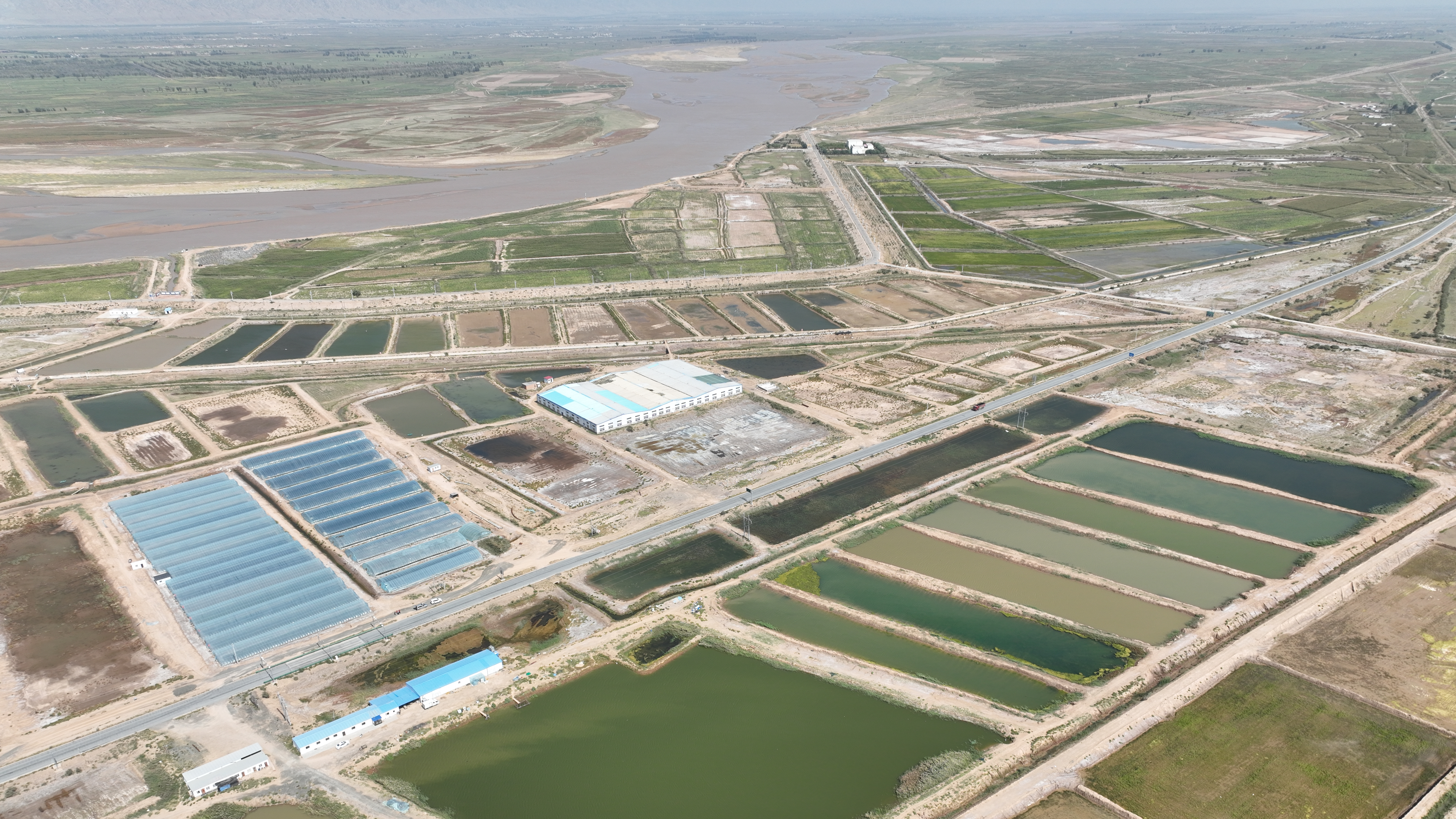
Aerial view of a shrimp farm, with ponds and greenhouses, and the Yellow River, Duguitala Town, Hangjin Banner, Ordos City, north China's Inner Mongolia Autonomous Region, September 7, 2023. /OAAHB
Aerial view of a shrimp farm, with ponds and greenhouses, and the Yellow River, Duguitala Town, Hangjin Banner, Ordos City, north China's Inner Mongolia Autonomous Region, September 7, 2023. /OAAHB
North China's Inner Mongolia Autonomous Region, with a dry continental climate and temperatures that vary enormously throughout the year, is not usually considered to be prime agricultural land.
But in Duguitala Town of Hangjin Banner in the city of Ordos where there is a vast tract of saline soil, lies multiple greenhouses. Rather than crops, vegetables or cows, they produce whiteleg shrimp.
The whiteleg shrimp, also known as penaeus vannamei, is native to the coast of Ecuador in South America. Owing to high tolerance to a wide range of salinity, it is an important farmed shrimp species for cultivation in saline-alkali areas.
Wang Zhenyu, a 39-year-old shrimp farmer, used to work away from his hometown after graduating from university. He returned in 2021 to raise shrimp.
Currently, the shrimp have reached a marketable size, with the wholesale price of prawns averaging 60 yuan ($8.17) per kg.
"Shrimp breeding started in 2015 in my hometown, forming a new industry. I saw the opportunities for investment in farmed shrimp, so I came back," Wang told CGTN.
He contracted 11.3 hectares of land from a local village and made a profit in the first year.
Thanks to improvement in cold chain logistics, the shrimp he raises are not only sold in Inner Mongolia, but also in northwest China's Shaanxi Province and Ningxia Hui Autonomous Region, and even southwest China's Chongqing Municipality and Sichuan Province.
In 2022, there were about 40 aquaculturists and companies engaged in shrimp farming in Ordos, with a total output of 350 tonnes and an output value of about 20 million yuan ($2.72 million), according to Wang Hao, aquaculture engineer at Aquaculture Station of Ordos Agriculture and Animal Husbandry Bureau (OAAHB).
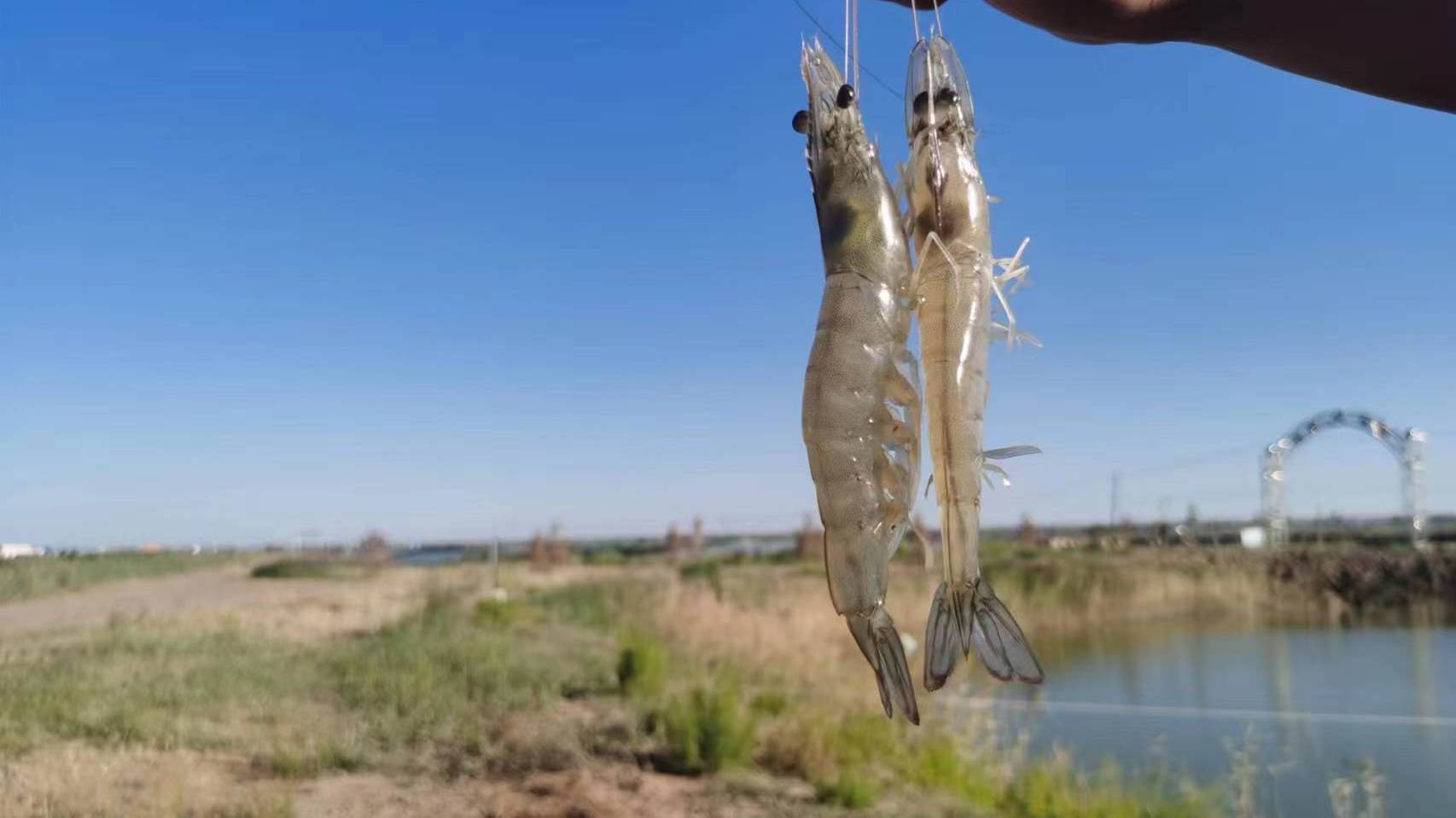
Whiteleg shrimp raised in Duguitala Town, Hangjin Banner, Ordos City, north China's Inner Mongolia Autonomous Region, September 1, 2023. /OAAHB
Whiteleg shrimp raised in Duguitala Town, Hangjin Banner, Ordos City, north China's Inner Mongolia Autonomous Region, September 1, 2023. /OAAHB
Technological breakthrough
Experts at the agriculture and animal husbandry bureau have conducted research on shrimp larvae desalination since 2017 and succeeded after three years of trial and error. The shrimp seedlings had to be desalinated for about seven days before they could be raised in local water.
Through their techniques, the shrimp larvae have a survival rate of over 80 percent and the cost has been reduced by more than half, Wang said.
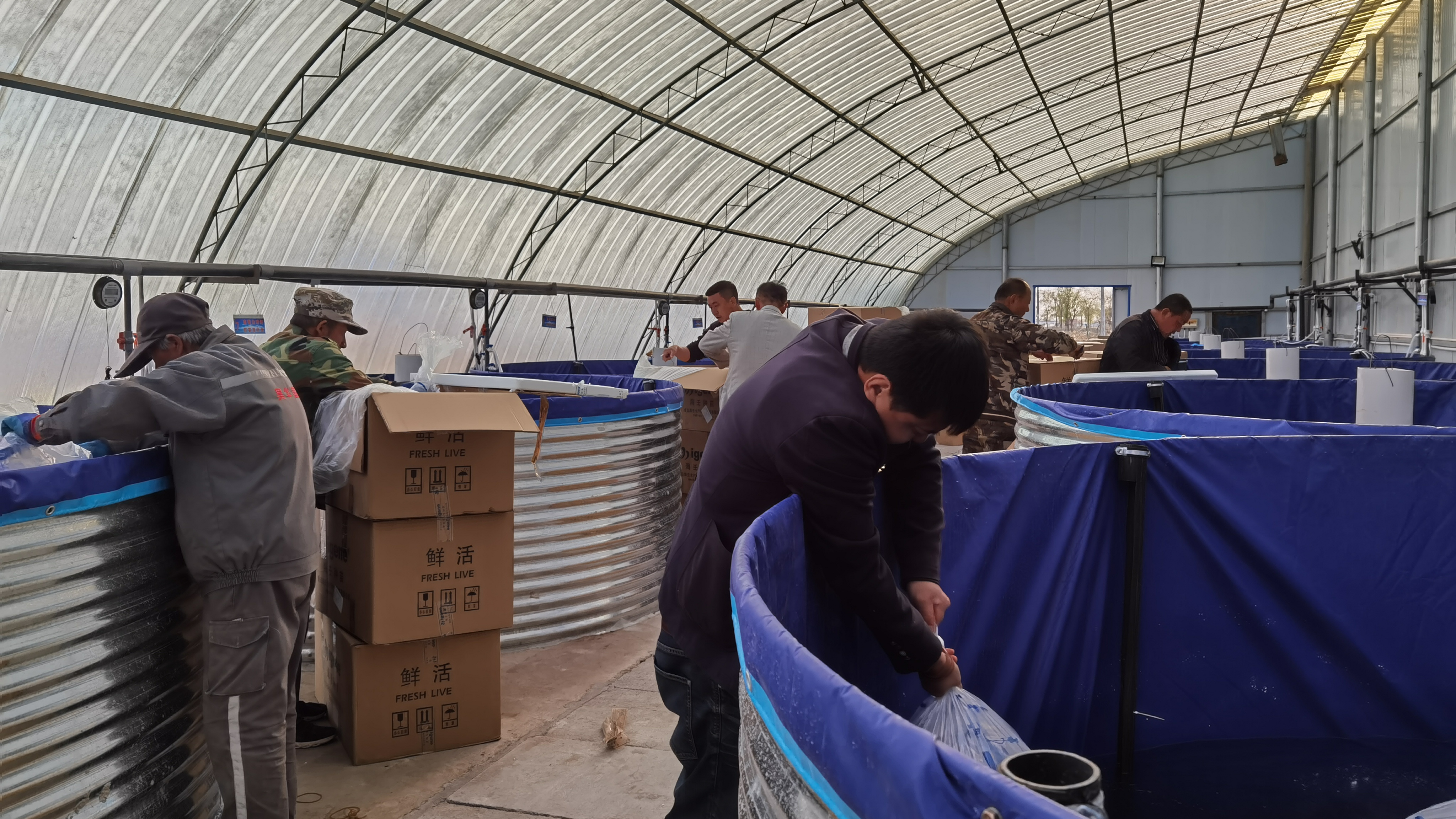
Experts and shrimp farmers prepare for shrimp larvae desalination in a greenhouse, Duguitala Town, Hangjin Banner, Ordos City, north China's Inner Mongolia Autonomous Region, May 2023. /OAAHB
Experts and shrimp farmers prepare for shrimp larvae desalination in a greenhouse, Duguitala Town, Hangjin Banner, Ordos City, north China's Inner Mongolia Autonomous Region, May 2023. /OAAHB
Shrimp breeding in Ordos is possible because of the saline-alkali land, but the high salinity also makes the water difficult to use.
Local people divert water from the Yellow River for irrigation and discharge the water into drainage canals, which are used to raise shrimp.
The water contains a high salt-alkali concentration. Experts used microorganisms to alleviate alkalinity in the water body, supplemented potassium, calcium, magnesium and other trace elements that shrimp need, removed heavy metals and harmful microorganisms and measured the pH of the water frequently during breeding.
The shrimp farming in Ordos extended to about 333 hectares this year, according to the OAAHB.
Winter starts in November and lasts through April in Inner Mongolia, making it a total of six months of chilly weather, resulting in shrimp being harvested only once a year.
Local people have been experimenting with using greenhouses to raise shrimp in recent years. It turns out that greenhouses shorten the breeding cycle, allow for a higher density, producing twice as much as that of normal ponds. Most importantly, it can help culture two crops of shrimp per year.
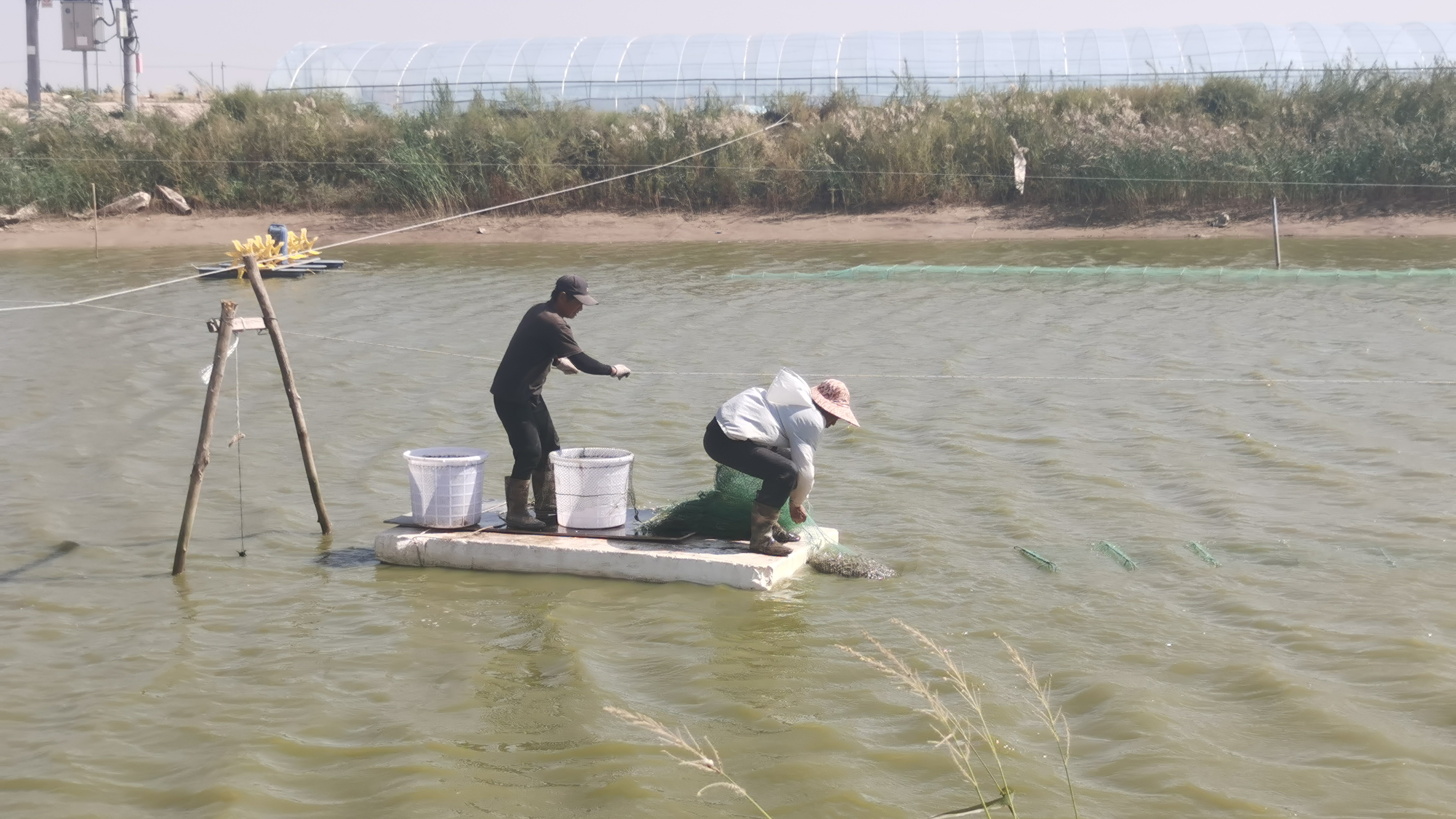
Shrimp farmers catch shrimp in a pond, Duguitala Town, Hangjin Banner, Ordos City, north China's Inner Mongolia Autonomous Region, September 7, 2023. /OAAHB
Shrimp farmers catch shrimp in a pond, Duguitala Town, Hangjin Banner, Ordos City, north China's Inner Mongolia Autonomous Region, September 7, 2023. /OAAHB
Beyond limits
To better serve farmers, local government cooperates with research institutions, such as the South China Sea Fisheries Research Institute and the Yellow Sea Fisheries Research Institute, both under the Chinese Academy of Fishery Sciences, inviting experts to provide technical support.
As with other new technologies, there have been some complications during cultivation. Wang told CGTN that he encountered a bacteria disease outbreak for the first time this year, causing massive death of shrimp seedlings.
"Fortunately, it is under control," he said. "We will improve quality control of shrimp seeds, water quality management and disease prevention.”
There is still a limitation – water shortages. To maximize the use of water resources, Wang optimized the recycling model. He repurposes the water used to raise shrimp to breed fish, and adds newly diverted water to the next year to raise shrimp again.
Wang said he plans to increase the area of facility farming and install smart farming systems in shrimp ponds for measuring water pH, salinity, dissolved oxygen levels and other indicators.
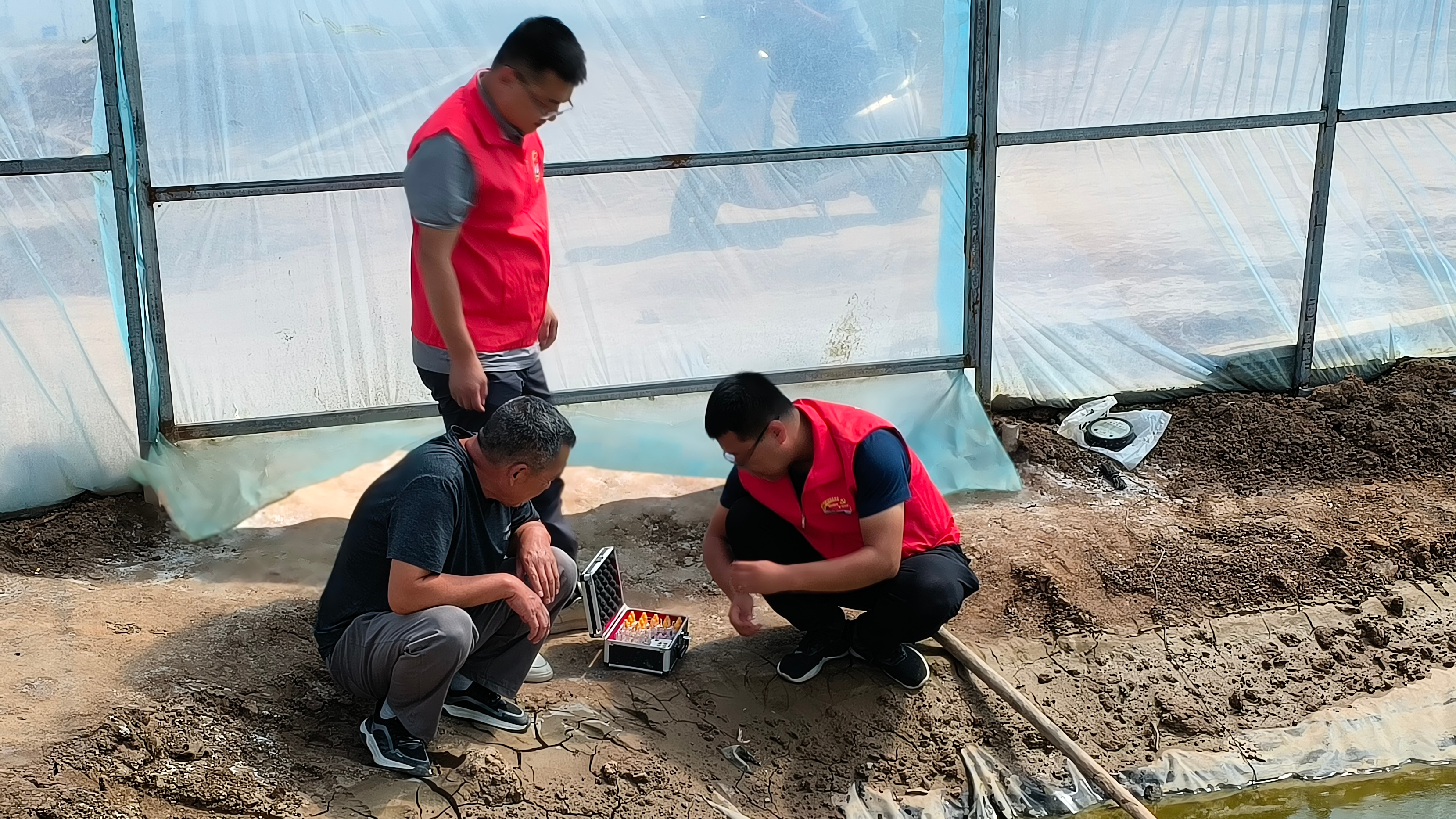
Experts at aquaculture station measure water quality used for shrimp farming in a greenhouse, Duguitala Town, Hangjin Banner, Ordos City, North China's Inner Mongolia Autonomous Region, September 7, 2023. /OAAHB
Experts at aquaculture station measure water quality used for shrimp farming in a greenhouse, Duguitala Town, Hangjin Banner, Ordos City, North China's Inner Mongolia Autonomous Region, September 7, 2023. /OAAHB
Future prospects
There are about 28,000 hectares of saline-alkali land that can be used by the fishery industry in Ordos, providing a huge opportunity for the development of prawn farming, according to Wang Hao, the aquaculture engineer.
The expert added that shrimp cultured in saline-alkali water is not inferior to that raised in seawater in terms of size, protein content and other aspects. It is slightly firm and springy, and tastes sweet.
Shrimp farming has formed a new type of industry in Hangjin Banner, Dalat Banner and Jungar Banner, and is reportedly being promoted in Xinjiang, Ningxia and other inland regions.
"There is great potential for developing shrimp farming in saline-alkali lands, and it has become an opportunity for the development of aquaculture in inland areas," said Wang.